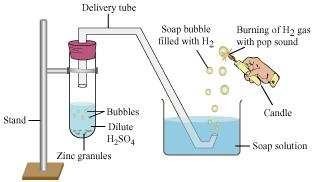Question:
1. Halley’s comet has a period of 76 years, and its distance of closest approach to the sun is equal to 8.9×1010 m. The comet’s farthest distance from the sun, given the mass of the sun is 2×1030 kg and G = 6.67×10-11 in MKS units, is:
- a) 2×1012 m
- b) 2.7×1013 m
- c) 5.3×1012 m
- d) 5.3×1013 m
Answer:
1. (c) It is self-evident that the orbit of the comet is elliptic with the Sun being at one of the foci. Now, as for elliptic orbits, according to Kepler’s third law:
T2 = (4π2 a3) / GM
⇒ a = ((T2 GM) / (4π2 ))1/3
a = [((76 × 3.14 × 107) × 6.67 × 10-11 × 2 × 1010) / (4π2)]1/3
But in the case of an ellipse, 2a = rmin + rmax
∴ rmax = 2a – rmin = 2 × 2.7 × 1012 – 8.9 × 1010
≅ 5.3 × 1012 m
Verified by Bookflicker Expert
